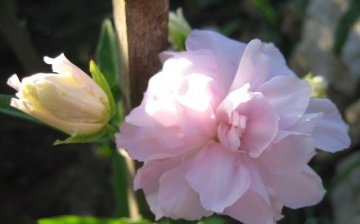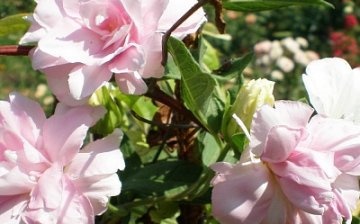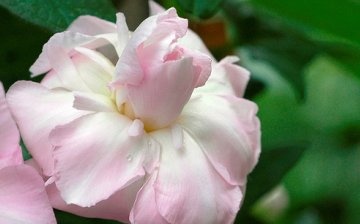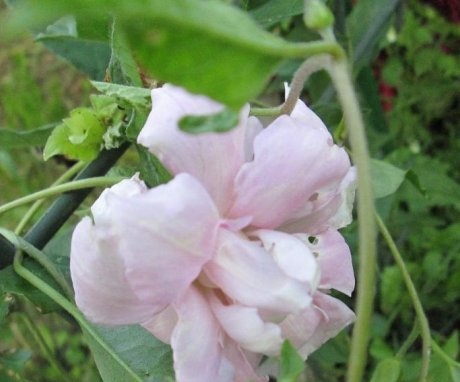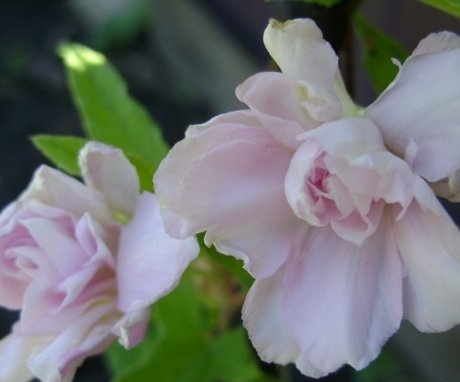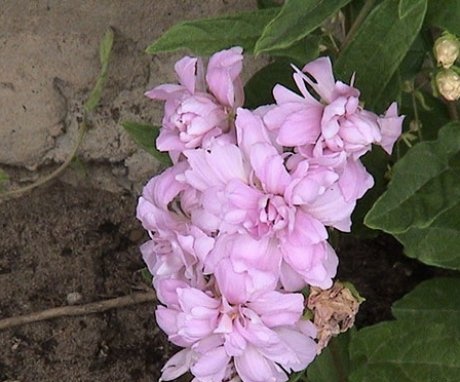Calistegia Flore Plena: cultivation and use
Calistegia refers to perennial climbing plants. East Asia and Western Europe are considered its homeland. The plant blooms with beautiful pink buds from the middle of summer. The flowers resemble double roses, which can grow up to nine centimeters in diameter. It is not for nothing that the people called them "Siberian roses". Under favorable conditions, calistegia can grow by three to four meters per season.
Content:
- Perennial features
- How to properly care for a plant
- Reproduction of calistegia
- Disease and pest control
- Application of calistegia
Perennial features
The plant is used mainly for landscaping vertical surfaces. It will help you quickly and beautifully arrange fences and unsightly walls on your personal plot.
The main advantages of calistegia:
- The plant is not yet very common in the world of gardening, so calistegia attracts attention with its originality.
- The flowers have a very beautiful pink hue, which looks spectacular against the background of green vine stems.
- Bloom lasts a rather long period - from July to September, so the kalistegia will decorate the garden for almost the entire summer period.
- The plant is unpretentious and easy to care for.
- The rapid growth of calistegy will be able to implement all design ideas for landscaping the site in the shortest possible time.
Kalistegia is very fond of light areas. Thanks to the light, flowering begins earlier and does not end longer. You can plant the plant in partial shade, but it is important to understand that the growth will be worse.
Since the plant can grow up to three meters per season, it is worth prudently taking care of an underground barrier that will prevent the calistegia from overgrowing. To do this, it is enough to plant the plant in a container without a bottom, which should be at least forty centimeters deep. Before planting, the soil must be loosened, it must pass water and oxygen well. In addition, it is advisable to install supports, thanks to which the plant will grow. This can be ordinary wire or mesh, the diameter of which should not be more than ten centimeters.
How to properly care for a plant
Loose garden soil with a high nutrient content is suitable for growing the plant. Kalistegia is afraid of excessively wet soil, so there should be no nearby groundwater on the site. The obvious advantage of kalistegia is the ability to bloom in the first year of planting.
Care Tips:
- It is important that there is sufficient ventilation in the planted area and the soil is oxygen-permeable. Watering should be moderate. The plant may well survive a short-term drought.
- The whole care of calistegia consists in the timely collection of dried flowers. This must be done every ten days, because dried inflorescences spoil the appearance of the plant and interfere with further flower ovaries. In addition, it is important to thin out the vines and guide their growth, creating a neat shape.
- Calistegia can grow in the same place for up to ten years. That is why it is advisable to feed the plant quite often - once a week. For this, the usual complex mineral fertilizer... Top dressing in the form of ash... In the summer, you can feed the calistegia mullein... The plant reacts very well to fertilization, the vines begin to grow before our eyes, and the flowering becomes thicker.
- Kalistegia is a winter-hardy plant. As a rule, in winter, its stems die off and wake up with the onset of warm weather. For wintering, the plant can be covered with dry foliage or moss. However, this should be done only during severe and not snowy winters.
- Calistegia cannot be transplanted in the summer, as it may die during the period of active development. Autumn is a good time for transplanting. As a rule, calistegia should be transplanted every ten years. It is important to take into account that the plant can grow strongly and absorb nearby growing flowers, so you should not place it near flower beds and front gardens. The roots of the plant are immersed in the ground to a depth of about 15 cm; up to three plants can be used per limiting container. The roots must be carefully straightened, moistened and buried in earth.
Reproduction of calistegia
Calistegia reproduces exclusively by division, since it does not form seeds. You can reproduce in the following way:
- Dig a bush in the fall.
- For the winter, place it in a box and store in a cool place.
- In the spring (early March), it is necessary to clear the roots of the old soil and divide it into five-centimeter pieces.
- Treat the sections with ash.
- Then they are planted in a container, covered with foil, and placed in a warm place.
- The first shoots are pinched when they reach five centimeters in height.
- At the end of spring, the seedlings are ready for planting in open ground.
For the first week, seedlings should be covered with containers without a bottom to give them time to grow stronger.
Disease and pest control
The main pests are snails and slugs. During the flowering period, the concentration of pests reaches its peak, as they feed on the flowers and foliage of the plant. You can fight them with the help of an insecticide, since manual collection of slugs from an overgrown and dense calistegia is not always a good idea. The earth around the plant follows mulch dry needles, so it will be problematic for slugs to get on the foliage. In addition, traps for dark beer can be set up on the site.
The most common diseases of calistegia are rot and powdery mildew.
Rot can be fought by washing the plant with soapy water, as well as using fungicides... Powdery mildew is a fungal infection that begins with a whitish coating on the foliage of the plant. In the process of progression, the foliage and stems of the plant are completely covered with bloom, and if you look closely, you can see the thinnest cobweb. As the disease progresses, the foliage will turn yellow and die off, this can happen until the death of the calistegia. It is possible to become infected with powdery mildew by air, since fungal spores can be carried by the wind over fairly long distances.
Also, the fungus can live on fallen leaves, so it should be collected and disposed of, this will be considered a preventive measure against powdery mildew. There is a great risk of contracting the disease during a wet period and rainy summer, when the soil does not have the opportunity to dry out completely. Also, you should not over-fertilize the soil with fertilizing with nitrogen in the composition.
Preventive measures to combat powdery mildew:
- Collection and disposal of fallen leaves.
- Weeding weeds.
- Good ventilation of plants.
- Disinfection of garden tools.
- Watering in the morning.
How can you deal with already infected powdery mildew:
- Spraying with milk whey.
- Processing with a solution of ash and laundry soap.
- Loosening of soil and thinning of plants.
- Spraying with iodine solution.
- Use of fungicides.
Do not make solutions for several applications, they cannot be stored and are designed to be used immediately after mixing.
Application of calistegia
Calistegia can braid a wide variety of vertical surfaces such as fences, walls, posts and columns. The basic rule of the support is that its diameter should not exceed ten centimeters. Quite an interesting option is the decoration of the porch and the front door of the house. Calistegia will look great as a background or a screen.
You can also create a beautiful arch, braided by a plant with blooming pink buds.
Calistegia is also used in folk medicine, but it is important to remember that this is a poisonous plant and ingestion can harm the body. The properties of calistegia are varied: it has a laxative, hypnotic and healing effect. Tinctures from this plant have antiparasitic properties. Decoctions are used for fever, cancer and various types of pain. Shredded foliage can help treat furunculosis.
Kalistegia can become the real pride of any gardener, and ease of maintenance is one of the most significant advantages of this plant. With the help of it, you can implement many interesting, design solutions for decorating your personal plot and enjoy the beautiful flowering of calistegia throughout almost the entire summer period.
More information can be found in the video:



